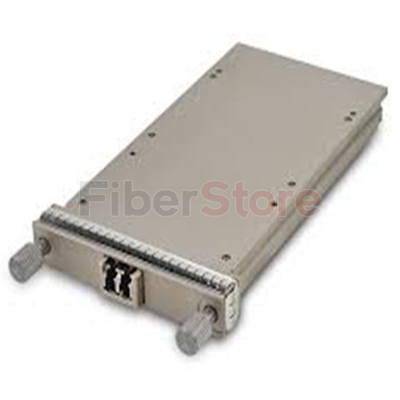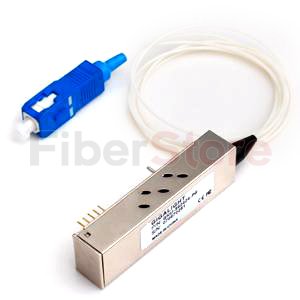|
|
|
نوشته شده توسط : sunprince
Several years ago, there was a report which said that the 10G/40G/100G optical transceivers would hit 1.44 billion dollars by 2014, driven by 10G SFP+ and tunable XFP modules. It is now 2014, and the forecasts have came true.
Infontetics Research released the report tracking 10-Gigabit (10G), 40-Gigabit (40G), and 100-Gigabit (100G) optical transceivers and transponders sold into the optical transport, carrier routing and switching, and enterprise markets.
In fact, the highlights of optical transceiver market have appeared years ago. Let's make a review.
- 10G, 40G, and 100G transceiver and transponder revenue was forecast by Infonetics Research to grow to 1.44 billion dollars worldwide by 2014, driven by SFP+ and tunable XFP technology, and by spikes in future 40G and 100G adoption.
- Tunable XFPs would be the major 10G growth opportunity for a long time, as they eliminated inventory management issues with fixed-wavelength modules, fulfilled the need for tunability as ROADM-based networking rises in popularity, and replaced the more-costly 300-PIN format.
- Meanwhile, SFP+ would replace XFP in the future, driven by strong growth in 850nm modules for 10-Gigabit Ethernet (10GbE) and 8/16G Fibre Channel (FC) applications.
- Shipments of next-generation 40G long-range (LR) and short-range (SR) optical transceivers would begin in 2010, primarily for enterprise and IP router applications.
 Revenue for 40G long-reach interfaces jumped 52 percent in 2009 over 2008, to 114.6 million dollars, while revenue for 40G 300-PIN short- and intermediate-reach interfaces dropped 35 percent, driven by price erosion and demand weakness. Revenue for 40G long-reach interfaces jumped 52 percent in 2009 over 2008, to 114.6 million dollars, while revenue for 40G 300-PIN short- and intermediate-reach interfaces dropped 35 percent, driven by price erosion and demand weakness.
- During the 2011-2012 timeframe, shipments of DQPSK transceivers were expected to outstrip those of DPSK, as the cost differential between the two drops. Worldwide revenue was forecast to grow nearly 10-fold from 2009 to 2014 for the tunable DQPSK 40G fiber transceiver.
Infonetics' report provided in-depth analysis, market size, and forecasts through 2014 frp manufacturer revenue and units shipped for 10G, 40G, and 100G transceivers and transponders. Specifically, the report tracked the following long- and short/intermediate-reach optical transceivers/transponders.
- 10G modules by tunable, WDM (fixed C-band), 1550nm,1310nm, and 850nm wavelengths, split by form-factor such as 300-PIN, SFP+, XFP, X2, XENPAK etc..
- 40G modules by tunable, 1310nm and 850nm wavelengths, split by form-factor such as DPSK, DQPSK, opto duo-binary (ODB) and other, 300-PIN SFI-5, 40GBASE-LR4, and 40GBSE-SR4.
- 100G modules by tunable, 1310nm and 850nm wavelengths, split by form-factor such as 100G DWDM, 100GBASE-LR4 (aka 4*25G non-return-to-zero, or NRZ), and 100GBASE-SR10 (aka 10*10G).
Nowadays, vendors providing products in the optical transceiver market include Cisco, Finisar, Avago, JDSU, and so on. Besides these famous companies, there are also many other manufacturers and suppliers who provide compatible transceivers with much more cheaper prices. For example, the compatible Finisar 10G SFP+ modules in FiberStore are all under 100 dollars!
:: برچسبها:
10G SFP+,40G fiber transceiver,Finisar 10G SFP+ ,
:: بازدید از این مطلب : 1769
|
امتیاز مطلب : 135132
|
تعداد امتیازدهندگان : 30
|
مجموع امتیاز : 30
تاریخ انتشار : جمعه 9 اسفند 1392 |
نظرات ()
|
|
نوشته شده توسط : sunprince
Optical transceivers are classified by wavelengths, data rates, reaches, packaging types, electrical and optical interfaces, temperature ranges, etc. The mannfacturing followings a process from discrete optics to optical subassembly and integrated chips to module assembly and test. There are various optical transceivers currently used with optical access systems. Conventional transceiver technologies based on discrete optoelectronic chips, components, and coaxial packaging are still the key enabler for the industury. The high cost of transceivers is one of the major barriers to mass deployment.

PON transceivers are bidirectional devices that use different wavelengths to transmit and receive signals between an OLT at a central office (CO) and the ONTs at end users' premises. There are currently two standard types of transceivers: the diplexer and the triplexer transceivers, respectively. For the diplexer transceivers, the wavelengths are designed in accordance with industry standards, namely, 1310 nm for the upstream and 1490 nm for the downstream wavelengths. For triplexer transceivers, the 1550 nm wavelength is allocated for analog broadcast video overlay in the downstream direction. It is also possible that digital video signals are carried on the downstream 1490 nm wavelength using video over IP technologies.
For rapid adoption of FTTH, it is important to reduce the cost of optical transceivers. In particular, the overall PON system cost is weigthed more toward the ONU, as the OLT cost is shared among the number of FTTH users. So the ONU transceiver should be the main target for cost reduction whenever possible. In summary, the technological challenges in the optical transceivers for PON systems exist in the following areas:
1. High-output-optical-power and high-sensitivity OLT at the CO to compensate for the losses introduced by the optical splitter and the transmission fibers connecting subscribers' premises.
2. Burst-mode optical transmission technologies for the upstream link.
3. Cost-effective packaging of optical devices.
4. Integration of more digital and analog functions into a single IC.
PON transceivers still represent a very active area in industry research and development due to the huge market opportunity. Because of the PON point-to-multipoint nature, PON burst-mode transceiver must face several unique characteristics to meet the requirements. Despite widespread interest, there is still no related PON transceiver multisource agreement (MSA) defined to support this application. Optical module vendors normally collaborate with system vendors on a case-by-case basis in specifications for diverse systems. Because of the EPON influence, SFF and SFP MSAs gained some popularity, while other form factors like GBIC and proprietary triplexer designs still exist for this application.
From the EPON/G-PON system compatibility and reusability viewpoint, transceiver modules can be split into blocks of BOSA, electrical subassembly (ESA), housing, and thermal management. The BOSA module must satisfy transmitter optical power, and receiver sensitivity, etc. Considerations on the ESA side include burst-mode physical-media-dependant (PMD) drving performances, system control signal acceptable, high receiver sensitivity, and receiver circuits also need to be examined. One most important aspect is the specific testing items such as transmitter ON/OFF time and receiver settling time. It is of key importance for system designers to maintain system performance and utilize system data processing ability. On the mechanical side, many critical issues need to be considered, such as thermak, EMI, temperature, humidity effect, etc.
Besides the PON transceivers, the biggest Chinese transceiver modules manufacturer FiberStore also provides SFP port to RJ45 Netgear and Netgear SFP+ module such as 10GbASE-LR SFP+ module Netgear.
:: برچسبها:
optical transceivers,SFP port to RJ45 Netgear,10GbASE-LR SFP+ module Netgear ,
:: بازدید از این مطلب : 1534
|
امتیاز مطلب : 135132
|
تعداد امتیازدهندگان : 30
|
مجموع امتیاز : 30
تاریخ انتشار : سه شنبه 6 اسفند 1392 |
نظرات ()
|
|
|
|
|

